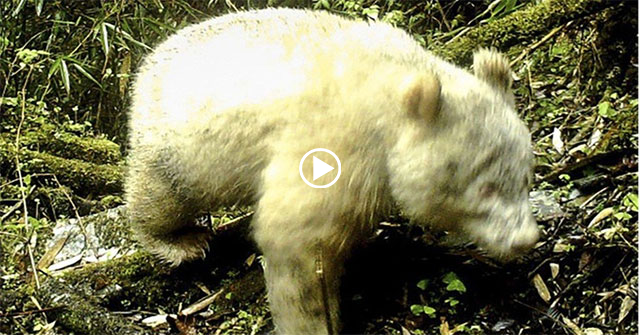The world’s only albino panda reappeared with yellow-white fur.
Officials in China’s Sichuan Province said on Jan.16 that they had again recorded the image of the world’s only albino panda. During this appearance, the color of the fur on all four legs turned yellow.
This unique panda was first discovered in mid-2019. Photos recorded in Wolong Nature Reserve (southwestern Sichuan Province, China) show that it is teeming with features of albino syndrome such as snow-white fur, white claws, and red eyes.
Earlier this year, this panda was seen again in the reserve while walking through a snowy field.
Three days later, his image was captured by cameras located on the mountainside at a distance of 1 km. The panda took about 10 minutes to reach the foot of the mountain, then disappeared.
“The panda has grown a lot and has a sturdy build. The photo shows that he is now about three years old and the white fur on his paws has turned yellow, ”said Tan Yingchun, a member of the Albino Panda Conservation and Research Project.
With the panda appearing alone in both recordings, researchers believe he has now left the nest and no longer lives with his mother.
Li Sheng, a Peking University researcher and bear specialist, explains that mutations in the albino gene inhibit melanin synthesis in animals’ bodies, making them white, yellowish-white, or pale yellow.
Albinism usually does not affect the body structure of the animal. However, this can make the animal more sensitive to direct sunlight and easier to detect. Mr. Li said he was happy that this particular panda grew up safe and healthy because it had a chubby body and was fundamentally adapted to its surroundings.
“This bear may have moved away from its birthplace to find new habitat, which is common among female pandas. Therefore, it can be a wild panda female who left her mother, ”Li said.
The reserve plans to expand its surveillance coverage and apply technologies such as DNA testing to look for new clues to better understand the distribution of the albino mutation in the local panda population.
Whether the albino mutation affects the panda’s physical condition remains a big mystery. Scientists hope to be able to study this subject in more depth, thereby improving people’s understanding of this ancient species of bear.


